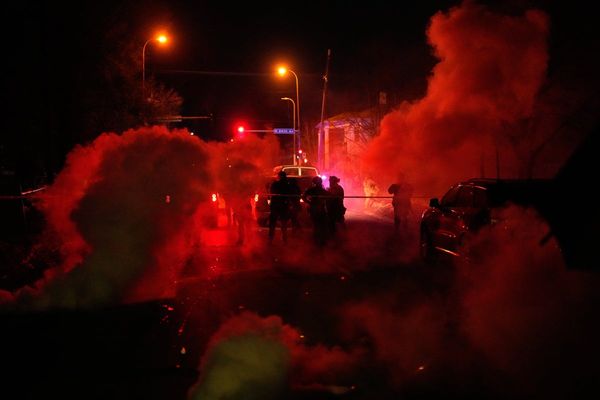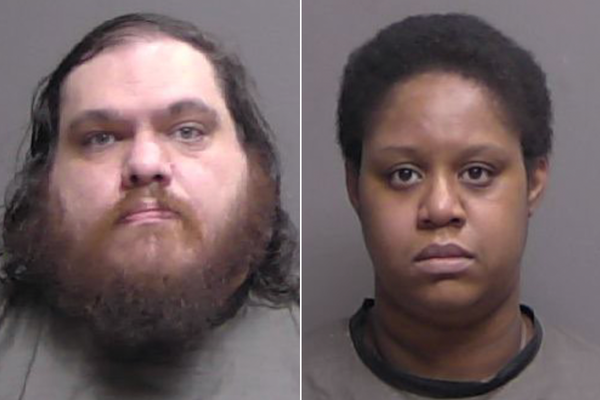Forty years after former Sydney teacher Chris Dawson's wife vanished, a judge is considering whether it was due to a cunningly planned murder, or a mother's decision to abandon her family.
The two opposing theories emerged during an eight-week trial in the NSW Supreme Court, where the ex-rugby league player, 73, pleaded not guilty.
Mr Dawson's lawyers said while he failed Lynette Dawson as a husband prior to the January 1982 disappearance, he had no motive to kill her.
But the court also heard evidence of Ms Dawson being seen with bruises, along with disclosures she made to colleagues about incidents involving violence.
The babysitter
According to the prosecution, Mr Dawson came to regard his wife as an "impediment" to being with their babysitter, JC, a student at the high school where he taught with whom he was "besotted" and "infatuated".
Ms Dawson's body has never been found and it is a wholly circumstantial case, also the subject of a popular podcast, The Teacher's Pet.
The trial heard the podcast has been downloaded tens of millions of times.
JC, who was 16 when Mr Dawson taught her physical education at a northern beaches school in 1980, claimed she was singled out and "groomed".
The court heard her home life was marred by violent outbursts from her stepfather and she moved into the Dawsons' Bayview property.
By late 1981, Mr Dawson was "desperate" to be with JC, after four different plans to leave Ms Dawson failed, Crown Prosecutor Craig Everson SC said.
His "slide into moral turpitude" was becoming obvious, the prosecutor argued, and then he resorted to murder.
JC said Mr Dawson called her while she was at South West Rocks on the Mid-North Coast in early 1982, telling her his wife had gone and wasn't coming back.
She said she was then treated like a "slave" while she continued living at his house and believed it was "odd" all of Ms Dawson's belongings remained in the bedroom.
They married in 1984 and divorced in 1990.
The hitman allegation
JC is also the source of what Mr Everson called "one of the most controversial things" in the trial.
She claimed Mr Dawson once drove with her to a building south of the Harbour Bridge, and when he returned to the car said he contemplated hiring a hitman to kill Ms Dawson but reconsidered because innocent people may be hurt.
In court, Mr Dawson's legal team accused JC of lying and highlighted the timing of when this allegation was first raised; during a custody dispute in 1990.
It was the same challenge Mr Dawson mounted when presented with it in a 1991 police interview, describing it as a "complete and utter fabrication".
"The whole purpose of [JC] raising the allegations is to slur my character with an upcoming custody battle which has turned extremely nasty and bitter," he told police in a video of the interview.
In court, JC denied defence suggestions she'd sought to destroy Mr Dawson's character.
"I'm not going to destroy him, he will destroy himself for what he has done to people, to me and to Lyn," she replied.
Chris Dawson's account
Mr Dawson chose not to give evidence.
In his police interview, he maintained he dropped Lynette off at a Mona Vale bus stop on January 9, 1982, to do shopping and planned to meet her at Northbridge Baths with their children in the afternoon.
At the pool, he said he received a long-distance phone call from his wife who said she "needed time away".
In following weeks, he claimed to have received similar phone calls from Ms Dawson, and in the final call he said he was told that she didn't know if she would return.
Mr Dawson told detectives Ms Dawson's disappearance followed a marriage counselling session which left him thinking their "problems were going to be resolved" as they walked out holding hands.
But Ms Dawson's former colleague, Annette Leary, remembered seeing bruises on her neck days before she vanished.
Ms Leary claimed Ms Dawson told her Chris Dawson had gripped her throat in the lift as they went to counselling and said: "If this doesn't work, I'm getting rid of you, I'm only doing this once".
Chris Dawson wrote a message in the classifieds section of a Sydney newspaper a day after their 12th wedding anniversary in March that year: "Lyn, I love you."
"We all miss you. Please Ring. We want you home."
The Crown argued the advertisement illustrated "ongoing, deceptive" attempts to present as "a deserted husband".
By that point, Mr Everson noted, he was living in a de facto relationship with JC and must have known his wife wouldn't return.
Mr Everson said that by January 9, 1982, Mr Dawson's "dominoes" were all lined up and "ready to fall".
The prosecutor accused him of using an "engineered window of quiet seclusion" to dispose of his wife's body, having killed her either alone or with assistance, and "cunningly" arranging for a friend to be at the pool as an independent, credible witness.
The sightings
Mr Dawson's defence team relied on alleged sightings of Ms Dawson by five people in the two years after she was reported missing to argue there's an alternative explanation for the disappearance
They include his brother-in-law Ross Hutcheon, who claimed to have seen her in Gladesville in 1982, and Paul Cooper the same year at a Warners Bay pub.
Ms Dawson's friend Elva McBay has claimed she saw her during a royal visit in 1983.
And former neighbours, Peter and Jill Breese, insist they saw her working as a nurse at a hospital in Curl Curl in 1984.
Barrister Pauline David argued the sightings were indications of life.
But as for what happened to Ms Dawson after the last one, Ms David said the "possibilities are endless".
She suggested the mother "saw the writing on the wall" that the relationship wouldn't recover and, after a decision-making process involving stages, chose to walk away.
Ms David said Ms Dawson potentially "created a new life" or subsequently "met with misadventure", referencing the disappearance at sea of former prime minister Harold Holt as an example of why a body may not have been found.
The barrister said her client had never been afforded the presumption of innocence and suffered significant forensic disadvantage.
Changing a name and opening a bank account were "entirely different exercises" 40 years ago, the judge was told.
Ms David also criticised "narrow" police investigations and said the matter had been viewed through a "coloured prism" involving a belief Lynette Dawson was murdered, which set in from the late '90s.
In the trial's final days, Justice Ian Harrison, who sat without a jury, observed that the facts were "manifold" and the Crown case relied not on any single matter but "a whole series of strands".
He has now retired to consider a verdict.







